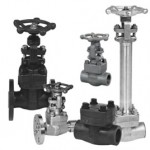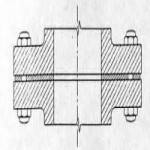Socket Weld (SW) fittings are defined in the ASME B16.11. As with socket weld, a pipe is inserted into a recessed area of the fitting. Both the pipe and the fitting are square cut, with no need for beveled end or preparation other than cleaning the outside, which allows easy welding and installation.
Butt weld (BW) fittings are defined in the ASME B16.9. They are welded at their ends to pipe end, with the same thickness as pipes. The end of butt weld fittings shall be beveled.

Butt weld elbow

Socket weld elbow

Thread elbow
Application
Socket weld (the fillet weld) resists around 1/2 the strength of butt welding. So it is mainly used for small pipeline (Small Bore Piping) with diameters NPS 2 or smaller.
Butt weld keeps better strength, good for high pressure or high temperature pipelines. So it is used when a welded joint with strength not lower than that of the base metal itself is needed.
Feature
Socket weld is easy to install. But it requires approx. 1/16″ of gap at the bottom of the pipe to socket into, to allow thermal expansion. This gap can lead to over stress problem that cracks the fillet weld of the fitting. Socket weld is troublesome in corrosive fluid service due to crevice corrosion. And it is easy to corrode due to the discontinuity of the smooth pipe internals.
Butt weld is the “best” in terms of strength, fatigue, and corrosion resistance, and temperatures compliance. However, it is more difficult to fit-up and weld properly, needing skilled welder and much time.
Price
Normally, the price of Socket weld fittings is higher than Butt weld fittings in similar size. But the extra cost of butt weld is higher for installation, considering labor cost and skilled welder.
Sourced by ekomeri





